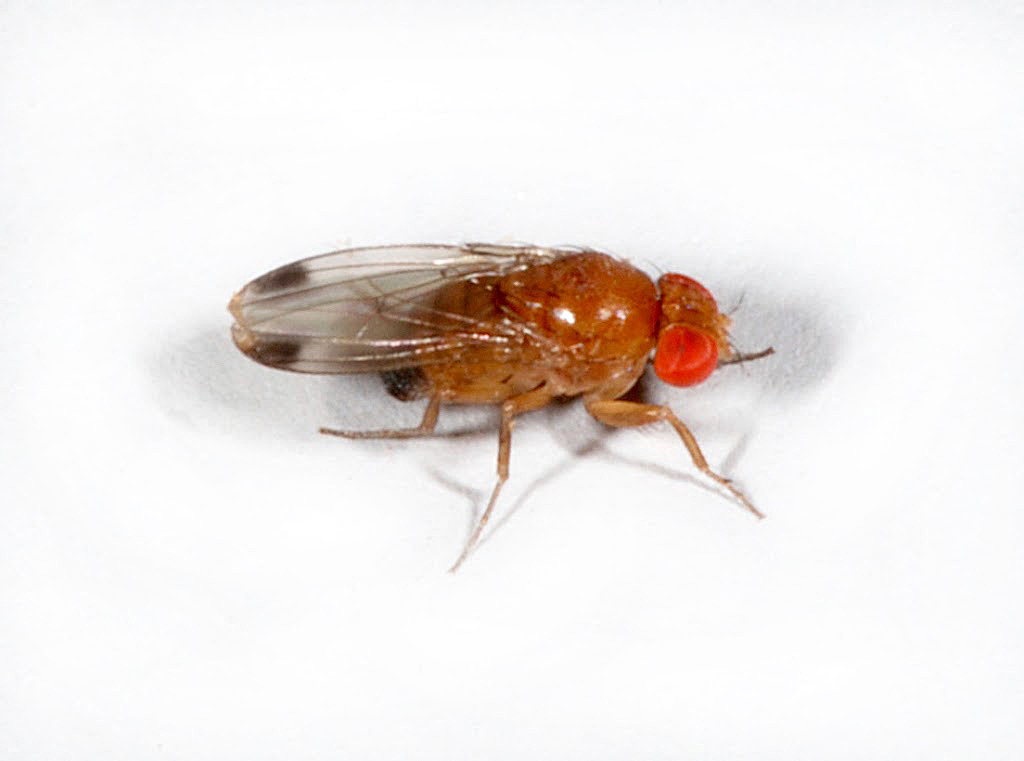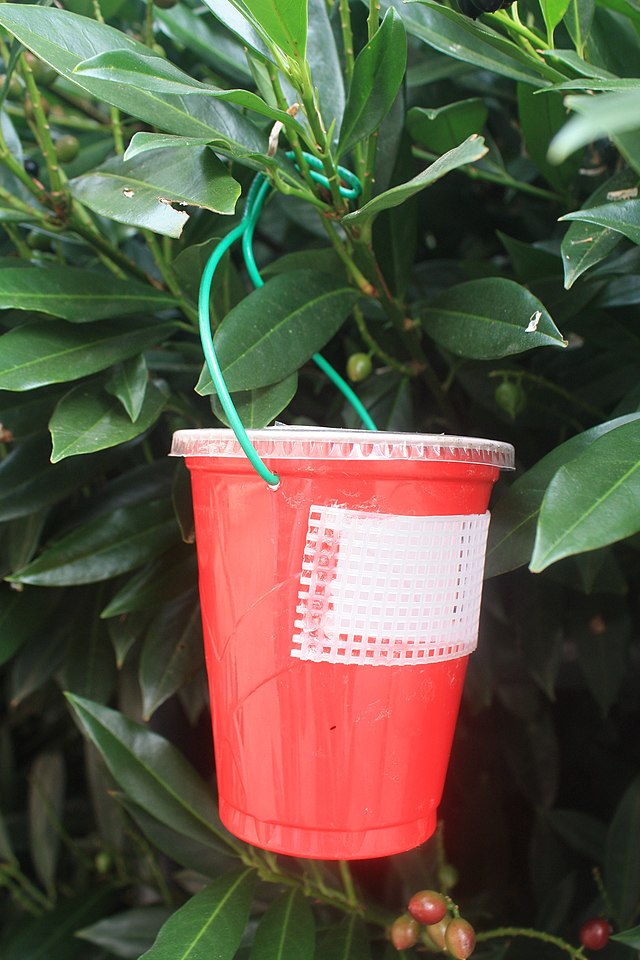
CC BY 2.0 Oregon State University
This invasive insect is thought to have originated in southeast Asia. The first record of spotted wing drosophila (Drosophila suzukii) is from Japan in 1916. Spotted wing drosophila is now established in small and stone fruit production areas throughout North America. These insects have been found in Saskatchewan, Alberta and southern Manitoba, but more work is needed to determine if there are established populations that cause economic damage on the prairies. Spotted wing drosophila is an economic pest of many soft fruits including raspberry, strawberry, saskatoon berry, blueberry, cherry and plum.
Larval feeding causes fruit to become prematurely soft and unmarketable. Larvae mature in 3-13 days and pupate most commonly in the fruit. This feeding also increases the risk of fungal infections in the fruit like brown rot or botrytis.
Spotted wing drosophila adults are 3-4 millimetres long, with a yellow-brown body and red eyes. Males have a conspicuous spot on the leading edge of each wing. Females lack the spots but have a characteristic large, serrated egg-laying organ (ovipositor) that allows them to pierce the skin of the fruit where they lay their eggs. Larvae are white maggots that grow up to 3 millimetres long. While the larvae are tapered on both ends and have no clearly defined head, they possess two dark “mouth hooks” at the front.

CC BY 2.0 Oregon State University
Biological and monitoring information related to spotted wing drosophila in field crops can be found on our Monitoring page as well as on the Manitoba Agriculture and Resource Development website.
